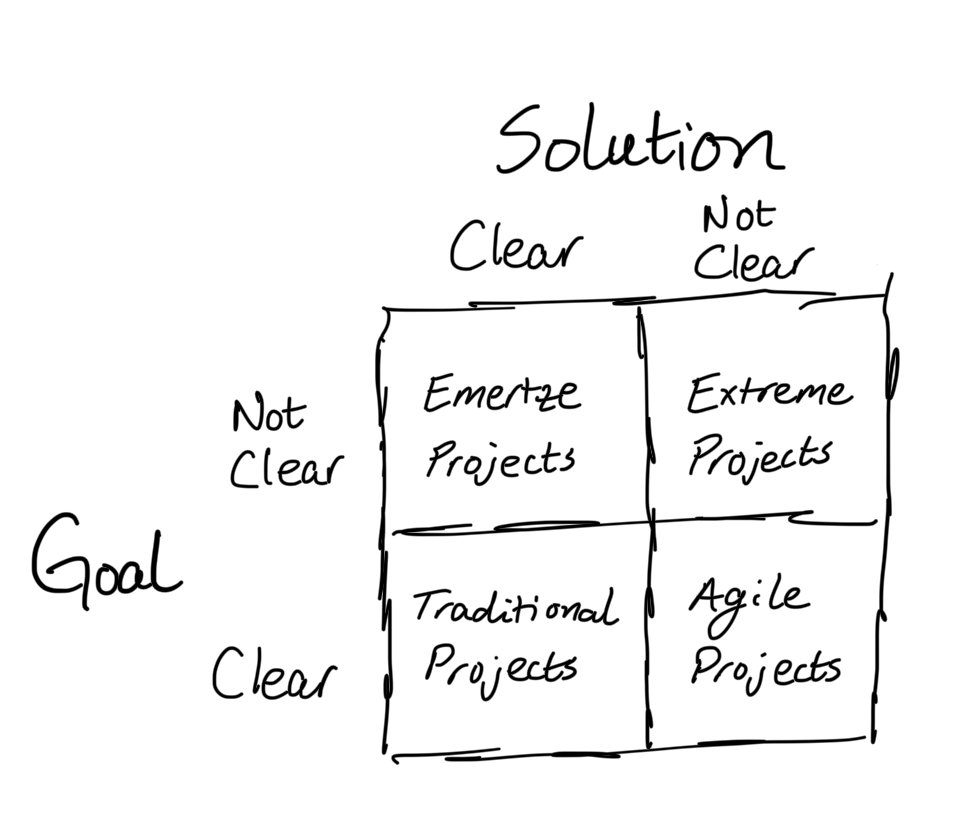Most people categorize projects as being either Agile or Waterfall. In is book, Effective Project Management: Traditional, Agile, Extreme, Hybrid, Robert Wysocki identifies four kinds of projects.

Projects have clear or unclear goals and solutions. When a project approaches and wags its tail, the project manager must check its goals and solutions to make the correct identification. Calling an extreme project “agile” would be silly, like confusing a golden retriever and a pug.
Traditional (Waterfall)
- Best approach when both the goal and solution are clear
- Example: Cut-over from one system to another over the course of a few business days
- Controls for risk: By creating a detailed timeline and work breakdown structure (among other things)
Agile
- Best approach when the goal is clear but the solution isn’t
- Example: Iteratively add a well-documented feature to an existing software program
- Controls for risk: Through empiricism - frequently checking that the project outcome is being realized
Extreme
- Best approach when both the goal and solution are unclear
- Example: Prototyping and testing a software program, making big changes along the way in response to feedback and discoveries about scope
- Characterized by: Large amounts of synchronous or near-synchronous communication
- Controls for risk: By time boxing and high-bandwidth communication
Emertxe
- Emertxe is “extreme” spelled backward, pronounced “ee-mert-zee”
- Best approach when the solution is clear but the goal isn’t
- Example: Discover the possibilities that may exist with existing technology - i.e. “We have this cool tech; now what can we do with it?”
- Characterized by: Large amounts of synchronous or near-synchronous communication
- Controls for risk: By time boxing and high-bandwidth communication
- Extreme and Emertxe are flip sides of the same coin